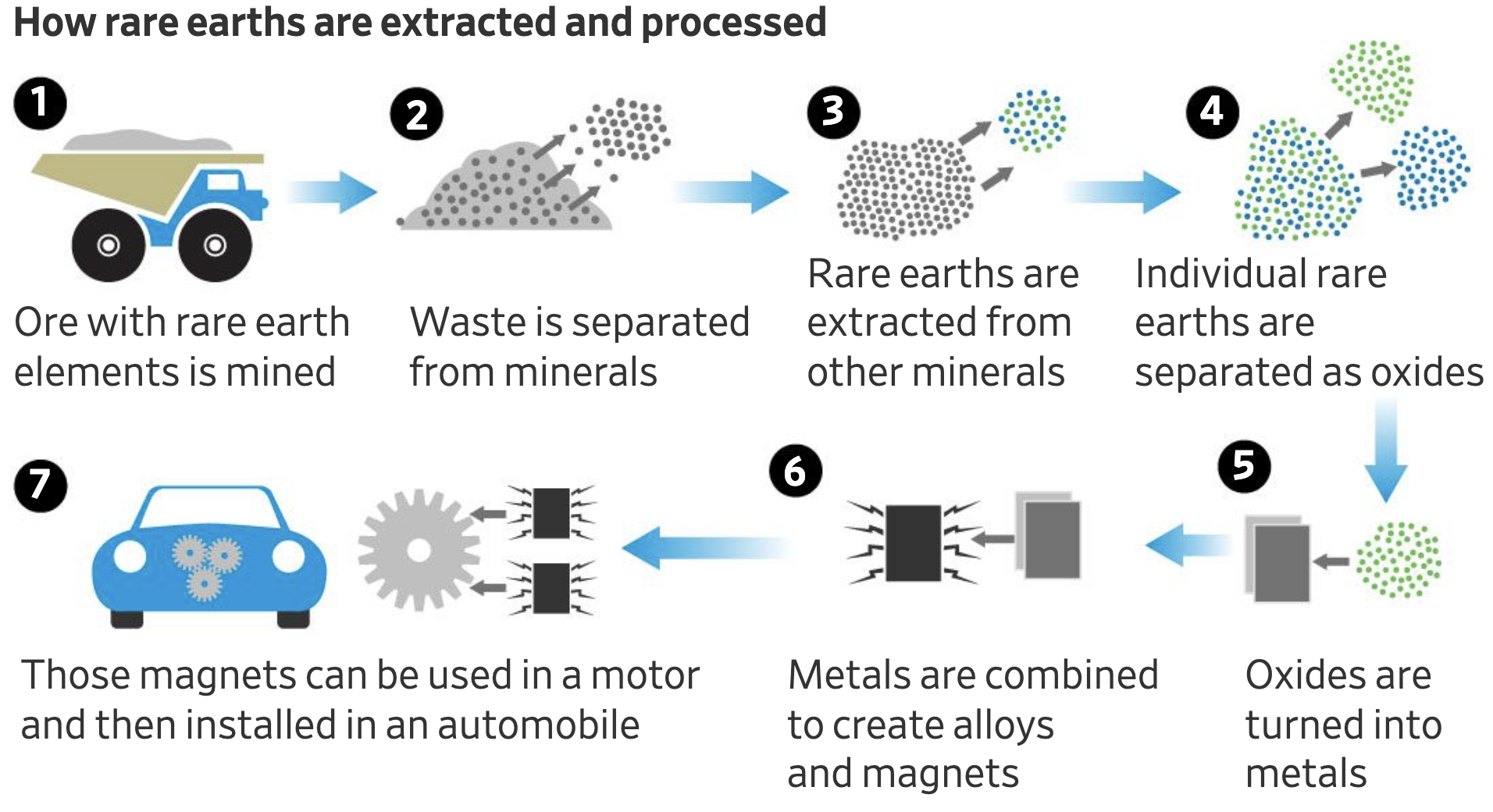China dominates the supply chain for minerals critical to modern technology—weapons, batteries, cell phones, wind turbines, inverters, and numerous other technologies. Recently, President Trump signed an executive order declaring a national emergency and authorizing the use of the Defense Production Act to speed the development of critical minerals—the same law he used earlier to speed the production of medical supplies during the coronavirus pandemic. Luckily, President Trump has taken action for it takes about 10 years to set up a mine, which is only one step in the process. The processing of these resources into the materials needed to produce the final products is another major step that China also dominates. China gained its dominant position because of the abundance of critical metals in China, the country’s lax environmental laws that make it much easier and less costly to mine and process them, and through subsidizing their production and processing.

At one time, the United States was the world’s biggest producer of rare earth elements—35 minerals the U.S. government has deemed critical to economic and national security—and the technology to process them. However, only one producing mine in California and no processing plants remain in the United States due to the high cost of environmental regulations in this country, which makes it difficult to compete. President Trump’s executive order calls for an assessment of our dependence on China for critical minerals, and allows for grants and loans to start production and processing as well as imposing tariffs and quotas on imports from China.
Since 2017, the U.S. government has funded some projects. The Defense Department is part-funding the development of a processing facility at a mine in California, and also is supporting a separation plant in Texas. The U.S. Geological Survey invested around $30 million in critical minerals research.
Pebble Mine, Alaska
A new mine with extensive resources is awaiting a federal permit from the Army Corps of Engineers to begin construction in Southwest Alaska. Pebble Mine is one of the largest undeveloped reserves of copper, molybdenum, and gold in the world. Its mineral deposits also include silver and other critical metallic minerals such as pyrite, chalcopyrite, molybdenite, bornite, covellite, chalcocite, digenite, and magnetite. Pebble’s copper production is expected to average 318 million pounds a year, which could supply as much as 25 percent of our country’s copper needs over the next century. It is also expected to produce 14 million pounds of molybdenum, 362,000 ounces of gold, and 1.8 million ounces of silver per year. The Pebble Mine contains billions of pounds of rare earth elements. It is rich in two important rare minerals—palladium and rhenium, containing enough rhenium to supply the entire world’s needs for nearly half a century. Rhenium is used in the construction of military jet engines and as a catalyst in high-octane fuel combustion.
The Pebble Mine was proposed decades ago and is located in a remote winderness, in 20 square miles of Southwest Alaska. The first discovery of mineral deposits was made in 1988 by Cominco Alaska. The mine was later acquired by Northern Dynasty Minerals Ltd in 2001. Over the next six years, the company did extensive environmental data collection, and geotechnical and engineering studies. In 2007, the project was placed under the Pebble Limited Partnership, which continued resource development exploration and began reaching out to the local villages, businesses, tribal elders, and other constituents. By 2013, it had held hundreds of meetings in the communities providing open forums and fostering public input in the planning of the project. By 2015, before the permitting process began, the Pebble Partnership spent over $750 million in exploratory and environmental studies. In July 2020, a final Environmental Impact Statement for the project and a record of decision were published, which incorporated public and agency comments.
Along with the Army Corps of Engineers, the project is awaiting U.S. Coast Guard permits for bridge construction, biological assessment consultations with the U.S. Fish and Wildlife Service and the National Marine Fisheries Service, and the completion of the pipeline right-of-way from the Bureau of Safety and Environmental Enforcement. During construction, Alaska is expected to receive $25 million in annual state taxes, and during operation, $84 million in annual state taxes and royalties and $27 million in annual severances taxes. The Pebble Mine is located on State of Alaska-owned lands.
In 2014, the Obama administration blocked the mine’s development based upon potential environmental issues. Democratic presidential candidate Joe Biden says he will stop the mine’s development, despite needing these critical metals for his climate and energy plans. That would mean the United States would remain dependent on China for critical components of much of our technology needs, including weaponry.
Conclusion
The Pebble Mine could be a valuable source of critical metals, which are needed for the construction of numerous technologies, many of which are part of Biden’s climate and energy plans and our currently necessary for our military defense needs. China dominates the world in both resources and in the processing of the ore into useable form because of its lax environmental regulations and high-level of subsidization. Due to the long time it takes to develop a mine (at least 10 years) and to develop processing plants, the United States needs to start immediately for we are already decades behind China. President Trump has taken action through executive orders, but Joe Biden could nix the opportunity as the Obama Administration did, claiming environmental issues. Thus, the United States could be dependent on China for these critical metals for a very long time if Joe Biden is elected.